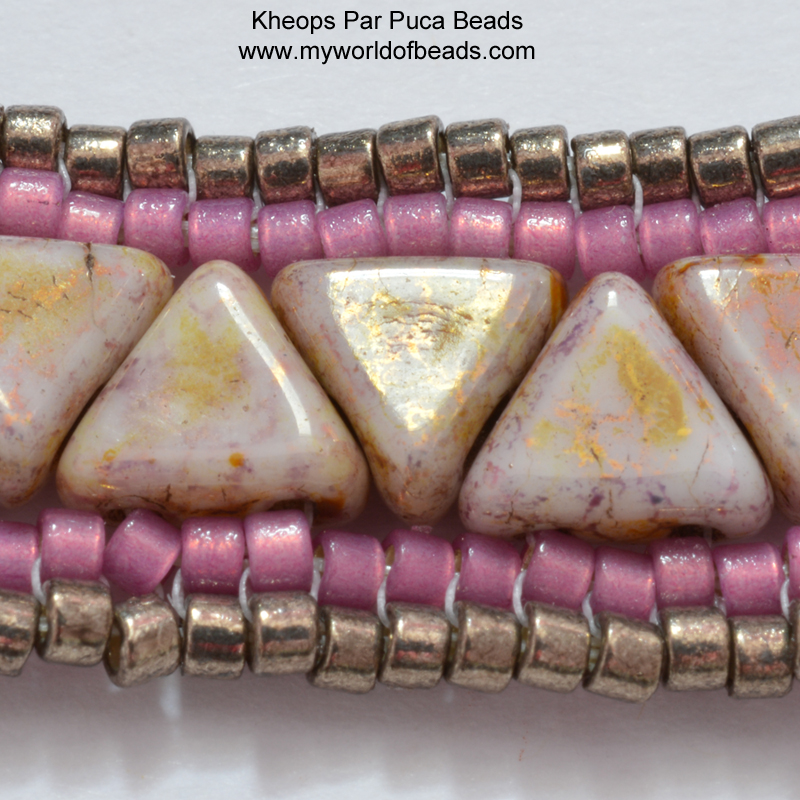What is a beadwork design?
What is a beadwork design? This is my personal definition of the beadwork design process. It’s how you translate an idea in your mind into a physical object made from beads, including documentation of that process. OK, so maybe that’s not rocket science. But how much time have you spent thinking about what this actually entails?
Turning a beadwork design into reality – step 1
Start by making some sketches and notes to put that idea onto paper. This should include the following:
- an image of the finished product
- ideas about what materials to use
- the colour scheme
- which beading technique you think you need.
Every designer spends a different amount of time doing this and will go into a different level of detail.
I’m going to make a confession here: if I’ve got an idea that’s not too complicated, I often skip this step altogether! Although, unless I’ve got the time to take the beads out at the precise moment the idea pops into my head, I will at least make a note of the thought, however brief. ‘It’s Wine o’Clock’ was the reminder that I jotted onto a sticky pad that resulted in the necklace shown here!

Refining your ideas
Although I may not make a lot of notes on paper, I do spend a lot of time revolving the design around in my head. I am incredibly lucky in that I have a very visual memory. So, when it comes to techniques that I know really well, I can actually envisage the details down to the thread path of a stitch.
If I have used the technique over and over, I also have a good idea of how a particular stitch behaves – is it firm or flexible? – can I create the kind of shape I want?
The same applies to the different beads. If they are a variety that I have used a lot, then I know how they behave when used in different techniques. So I can make a fairly comprehensive beadwork design plan in my head. I may or may not choose to write this down on paper.
Making sketches
It is quite common to feel a little fear at knowing how to sketch a design. Often people are afraid that they have no drawing skills, so they won’t be able to make a sketch.
I know my drawing skills are pretty poor compared to my ability to work with beads, or indeed my ability to sculpt (my school art teacher made no secret of this fact!). And, believe me, you don’t want to try working from some of my sketches!
The point is, they contain enough information to give me a creative guide. They’re not intended to be shared with the wider public.
However,I may have the most beautiful image in my head, but conveying that beadwork design to another person in order to secure their permission to go ahead and take out the beads on their behalf can be a tricky matter.
I have a few tricks though. So if you’re interested, there’s another post on that here. For now, back to the design process.
Design step 2
Take out the beads and play!
Let’s just imagine that I sketched a beadwork design for a necklace with a pendant on a simple chain. I made some notes that I was going to use a Swarovski rivoli for the pendant. Then, I planned to encase it with beads, possibly using peyote stitch and possibly with some embellishment. I then planned to hang it on a spiral rope made with size 11 beads.
I may also have decided to set myself the challenge of using some Twin Holes to add another dimension to the embellishment. Let’s also imagine that I’ve hardly ever used Twin Holes. But I’m thinking that they will probably work using peyote stitch. After all, why wouldn’t they?
So, what do I do? I take out the beads and use a method I already know to create the basic casing for my rivoli – great! This is tried and tested, so I pretty much know it’s going to work.
Now I try adding the Twin Holes. But I don’t really have any idea what I’m doing here and I’m not used to using these beads. So the lovely plan in my head isn’t working out.
I have to move on to step 3…
Refining the beadwork design
OK, so the Twin Holes maybe weren’t such a great idea. Or maybe they were a great idea, but it was the peyote stitch that didn’t work…
This step involves a lot of ‘Frog Stitch’ (aka ‘Rip it, rip it’…aka unpicking the beads I’ve just spent hours stitching together!).
Every time I try something and it doesn’t work, I need to unpick. But I also need to try and decide why it didn’t work so that I can refine the materials or the techniques in order to achieve the look I’m after.
Sometimes this happens immediately. Sometimes I end up shutting the beads up in my UFO box because my head just isn’t yet in the right place to make this design work.
Maybe it will never be in the right place to make this particular beadwork design work. But maybe it’s sparked another idea to try.
The most important part of this step though is making notes. Whether you write things on paper, type them straight into the computer, or document them with photos on a camera or smartphone, make sure you document your process. Trust me, you’ll thank me for this advice in step 4!
Documenting the process
Assuming I didn’t have to add to the UFO collection, I’ve now refined my beadwork design so that it works and I have a beautiful necklace sitting in front of me and a feeling of satisfaction and well-being.
I could leave things there and just enjoy wearing my necklace. But what happens when I wear it for the first time and my friend spends the evening drooling over it, ending up with the words,
‘You know what?…that would look perfect with that dress I bought last week – you remember, the black and white one? Can you make one for me in black and white?’
Feeling pretty pleased with yourself, and wanting to help out your friend, you agree. Then dash into the nearest bead shop to buy the black and white beads. Take them home and sit down to make another necklace.
Oh dear…what was the bead count for the tube to encase the rivoli? And how did you add that embellishment in the end? Why, oh why, did you agree to make this for your friend? Maybe she’d like that lovely necklace that you saw in the beading magazine last week instead? After all, that has the instructions written out for you!
Step 4
No, step 4, is writing up the instructions for your beadwork design. That’s why you made notes as you were working on it.
I have come unstuck here as well. I made this bracelet for the Beadworkers Guild challenge in 2013. It was reasonably complicated and I made it without much of a plan in my head.
I never intended to teach it, sell it or do anything with it except enter it in the challenge and then enjoy wearing it. The first time I wore it in public, at a workshop I was teaching, it received a lot of admiring comments and a request for the pattern.
If there’s a demand for a pattern, why would I turn it down I thought? At the same time, my heart sank as I thought back to the paltry notes I had made when I was so busy beading. I have turned it into a pattern. At the request of the Beadworker’s Guild it appeared in their journal, but minus the yellow fish because I simply could not remember how I made that. Besides, it’s quite nice to know that this is unique to me every time I wear it!

How to write up your pattern
Writing up your beadwork design may vary depending on who you are writing it for.
If it’s just for you, then just write the notes that you need. Maybe add some photos or some hand-drawn sketches to remind yourself about thread paths that aren’t obvious. Just make sure you have enough information that you can pick it up in a year’s time and replicate what you did.
If you’re writing up a pattern for a magazine, there may be some guidelines to follow and each magazine may be different. You will always need to describe what you did in step by step written instructions. You will also need to include some photos and/or diagrams to illustrate those written instructions.
Some magazines specify that there should be a diagram to illustrate every single step. Some will accept diagrams to illustrate the major steps, or the most tricky parts. Others want photos. Some magazines will be able to use software to turn clear hand-written sketches into diagrams.
If you are writing up a beadwork design in order to teach a class, however small, or informal, you will need to provide written and illustrated instructions. The same applies to writing tutorials to sell. You can find more help on that at this link.
Last, but not least, check your instructions carefully. It’s a good idea to write them up, leave them overnight and then come back to look at what you’ve written with fresh eyes. If you are documenting the beadwork design for something really important, perhaps consider getting a beading friend to check it through as well. It can be very hard to proof-read your own work as you tend to see what you want to and may miss mistakes or things that are unclear.
Last, but not least
File your design, publish it, teach it. But most of all enjoy it and enjoy the process of bringing that idea in your head to life.











